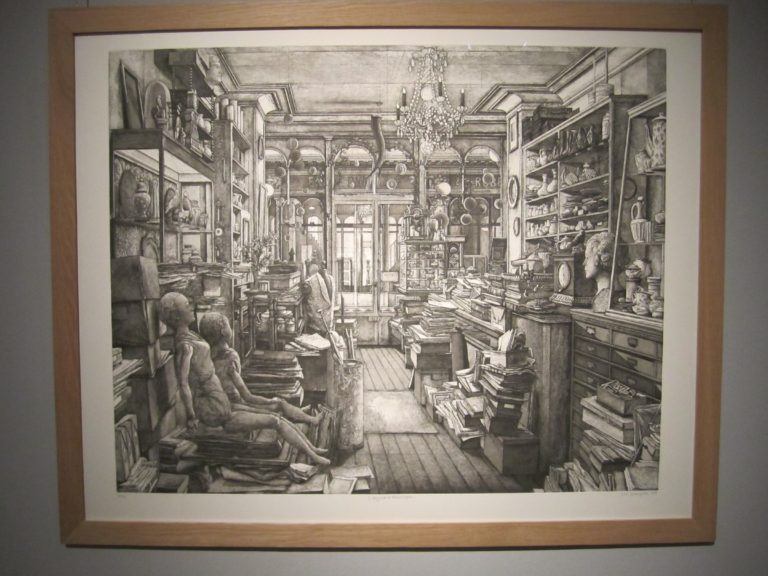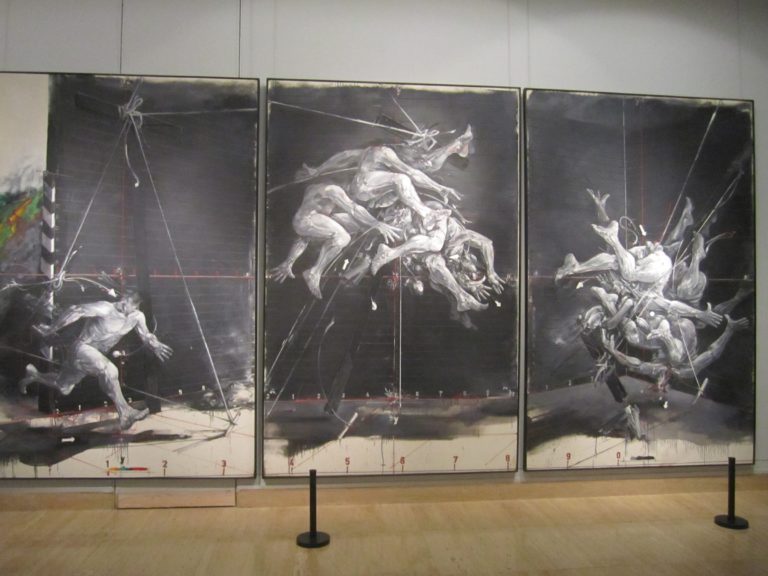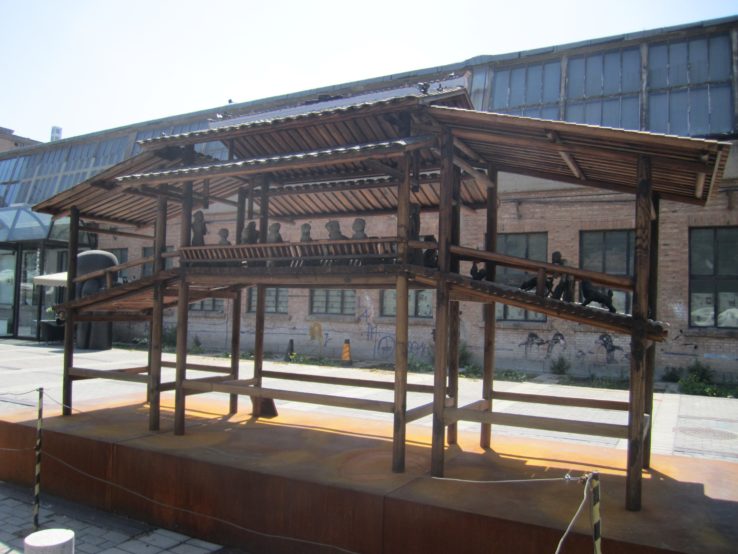Before traveling to Beijing, I took the opportunity to arrange to meet with Beijing Playhouse Executive Director, Chris Verrill. Beijing Playhouse describes itself as “China’s English Broadway Theatre.” It is essentially a community theater that casts ex-pats from various English speaking nations. Though anyone with sufficient skill in English can audition. Looking through some of the playbills, I saw people from the U.S., British Commonwealth countries, Africa, Japan, India and China.
While the Beijing Playhouse does conduct kids’ theatre camps and classes, they only just mounted their first children’s theatre performance this Spring. I got to meet up with Chris Verrill after a performance of Rapunzel at a new theater space they were trying out. Unfortunately, the house staff quickly locked the theater up after the performance so I didn’t get an opportunity to see inside.
Verrill has been running the Beijing Playhouse for 10 years now. The Playhouse was founded when he was traveling in Beijing and decided to mount an English language production seeing that no one else was. People were so pleased, they urged him to stay develop a permanent theater company.
As you might imagine, running an English language theater in China has its own set of challenges, not the least of which is the fact that the Beijing Playhouse is categorized as a performing arts consulting entity rather than a theatre and needs business partners to help them produce shows.
Technically, they aren’t supposed to sell tickets so they can’t use China’s online ticketing equivalent of Ticketmaster. (The seat numbers on the ticket samples Verrill gave me need to be filled in by hand.) Nor can they do much marketing via print and broadcast media.
They also have to be careful about the content of the shows they present. Not all of the problematic subjects are political. The ghosts in Dickens’ A Christmas Carol tread a fine line.
This isn’t to say Beijing Playhouse is furtively darting into theaters. Verrill invites Communist Party members to all the productions and events.
Verrill also strives to remain in favor with the merciless powers of Western theater–dramatic and musical rights licensing agents. While it might be easy for a company in China to fly under the radar, the Beijing Playhouse pays all due royalties. As a result, they have run into the same frustrating problems faced by theaters in the US–having rights blocked due to an incipient tour.
Verrill said his request for the rights to Sound of Music were deflected for six years before the tour actually came through Beijing.
Beijing Playhouse supports itself by soliciting corporate support from a variety of sources. They can’t really engage in fundraising.
One of the interesting things I learned was that the average age of theater audiences in China is about 25 years old. Beijing Playhouse audience tends to be a little older. Theater is viewed as cutting edge given that the Cultural Revolution had sought to eradicate it.
Most of Beijing Playhouse’s performances are presented with projected Chinese supertitles. Verrill says it can get entertaining when the subtitles get a little out of synch because there will be two sets of laughter–the first from those who understand English and the second moments later from those who are just getting the joke in the supertitles.
Verrill noted that Chinese audiences tend to be poorly behaved by Western standards. They get up and move around, chat with others, potentially climb up on stage from time to time. He said after 10 years they had gotten their audience to modulate their behavior quite a bit. A higher than average ticket price helps to deter some people as well.
However, he said, the Children’s Theater performances of Rapunzel were pretty chaotic between normal kid behavior and a new audience segment that wasn’t familiar with the expectations of live performance attendance.
Now lest you think they are adherents of the philosophy that audiences should watch quietly until it is time to laugh or clap, Beijing Playhouse performs many shows using the British Pantomime style which takes children’s stories, mixes in people in drag, innuendo and double entendre, and audience participation.
Verrill swears by it and encourages theaters in the U.S. to include it in their season. He said the first time around, people might not understand that they are expected to participate, but thereafter they will jump in and participate whole-heartedly.
Verrill is also an advocate for Readers Theater. Beijing Playhouse will frequently engage in an intensive week long rehearsal process to put a show together for a single performance to benefit charity. They use this format to introduce audiences to slightly edgier content than might be found in their main season. For example, this June they are planning to perform One Flew Over the Cuckoo’s Nest.
Since Beijing Playhouse ends up performing in spaces all over the city, we got to talking about the quality of different places both around the city and the country. One thing I had been aware of was that many cities were building big grand performing arts centers without sufficient programming available to fill a calendar even before considering whether the shows are of interest to audiences.
Verrill noted that one of the things that China lacks is the regional development system the US has where shows get developed and refined before going to Broadway. As a result, some times things are mounted in the big houses before they are quite ready for prime time.
I wonder what sort of structure might evolve over time in response to this need. Without a doubt it will be particular to China and may not ever really occupy the spaces currently constructed for performances.
My thanks to Chris Verrill for taking the time to meet with me. Also, for quickly responding with verification and clarifications on the content of this post.


































"Though while the author wishes they could buy it in Walmart..." Who is "they"? The kids? The author? Something else?…